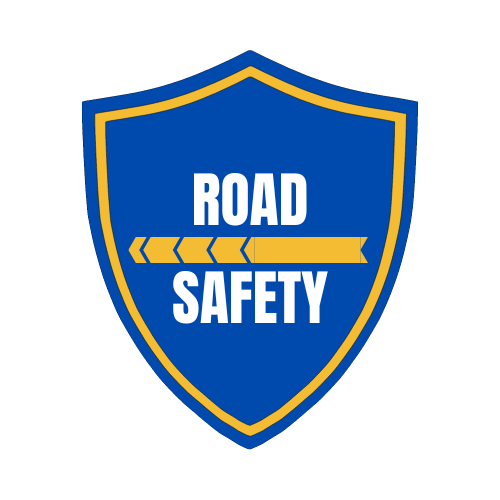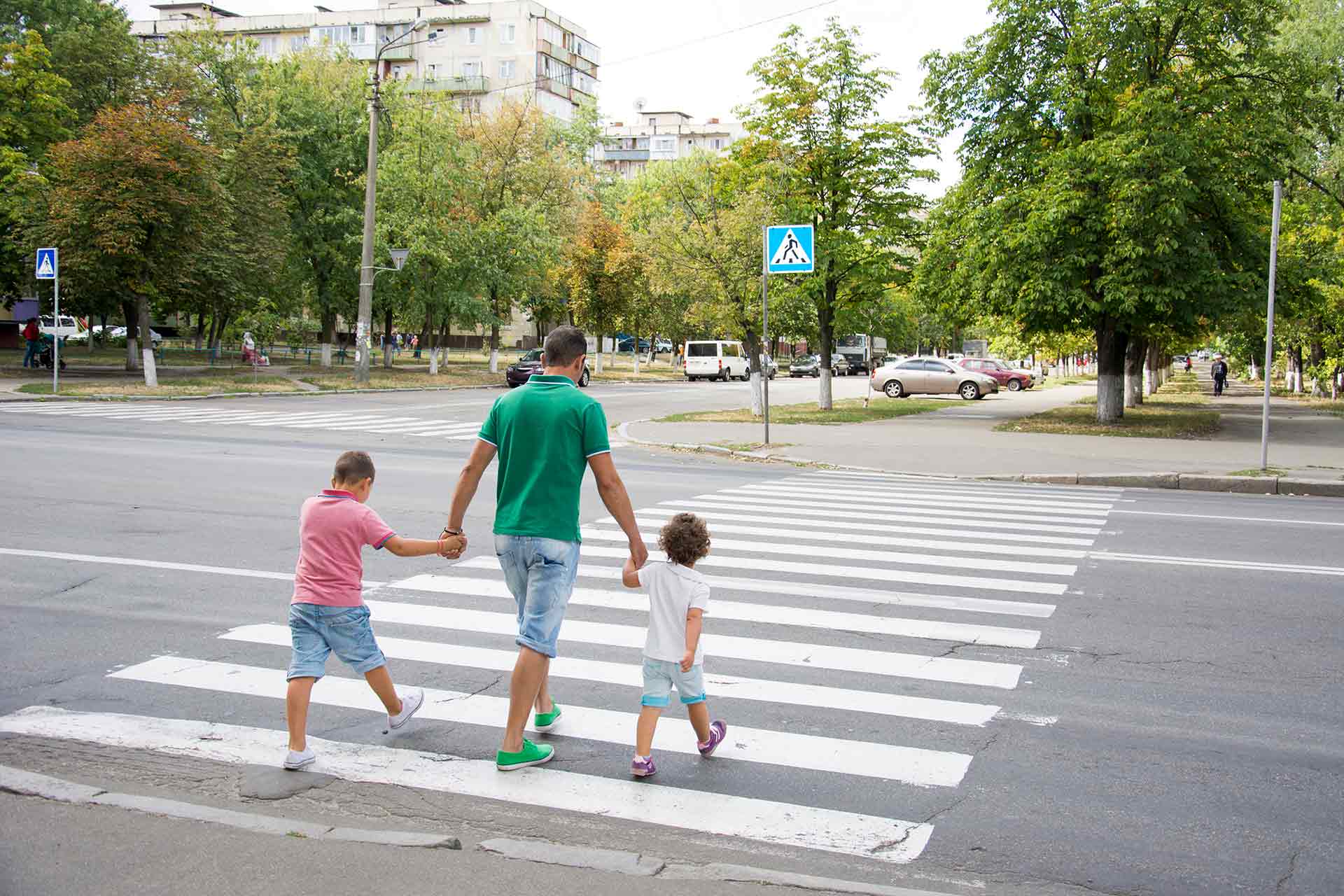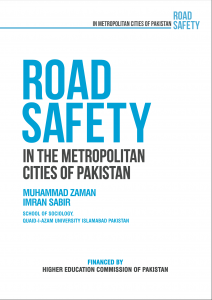Children are the most precious asset of any nation. It is very important to ensure their safety everywhere. Being young and unpredictable they are more vulnerable to road accidents. It has been found that many accidents and crashes happened because of the children roaming, playing or cycling alone on the roads. Therefore, teaching road safety at a tender age can not only reduce the risk of accidents for them but also can be helpful for the safety of others. The objective of this article is to determine the role of parents and the society in guiding the children to abide by the traffic rules for their own and others safety at the time of personality development. Parents and society are the two major stake holders in the personality development of a child. Medical science says that a child starts listening and learning three months before his birth and with the development of brain cells many concepts also start taking place in the brain. That is how the role of the parents is of pivotal importance, then the society in which a child grows up has deep rooted effect in his personality and finally when a child goes to a school and the teachers prune and shape him and these teachings stay with him till last.
Parents are the role models for their children in all walks of life. Actions speak louder than words, so before teaching anything the parents have to set a practicing example before their children by following all the rules of road safety in true spirit. It is the responsibility of all parents that they should always wear a helmet themselves and also provide helmets to the young riders travelling with them. The parents while travelling with the children must drive very carefully, should not over speed or breech any traffic rule. While riding in a car they must tell the children about traffic signals and other road signs and their functionality. The most important thing is to tell them the benefits of following traffic signs and signals. Parents may take them for a walk or short cycle trips where they practically teach them that what side of the road, they should opt for walking and in which track they should do cycling. The most important part of the training is to teach them to cross the road. In developing countries, a zebra crossing is not available everywhere. Roads are over occupied with untrained and absurd drivers so it is very crucial and arduous to teach them to cross the road safely. First of all, they should teach them to look right and left again and again. If there is any vehicle coming their way they should look into the eyes of the driver and make an eye contact with him before crossing the road. It will be more appropriate to give signal by hand and mention that you want to cross the road. This will alert the driver and he will become cautious. Another issue of great concern is that the parents should be very prudent in providing the vehicles to their children at the right age. They must make sure proper professional training and completing the license process before sending them on roads. It is evident from the statistics that number of the severe road accidents happened due to minor drivers are high on graph.
Along with the practical training, the emotional indoctrination is also mandatory part of it. As the human mechanism of perception is based on the concept of reward and punishment. The parents should very carefully talk about and show some victims of road accidents vey tactfully to their children and also reward them whenever, they follow the traffic rules.
The A B C of road safety is set by the society in which we live and grow, here A stands for awareness, B for behaviour and C for campaign. The people set the trends of ‘dos’ and ‘don’ts’ of their society. It is said that if you want to learn about any society you need to live in its people to observe their norms, values and lifestyles for a long time period. This job can be done in a couple of hours by standing or travelling on its roads. One can easily learn about the society by observing the behaviour of people on roads. The way drivers drive, the way pedestrians walk and cross the road, how they park their vehicles, behaviour near a school, hospital or mosque. Use of Public transport, response to the other users, ambulance, ladies driving the cars condition and maintenance of the vehicles. Then the most crucial aspect is the role of law enforcing agencies, implementation of punishment and reward system in its true spirit. These are the chapters of road safety that teach and train the growing children. Seeing is believing, no matter whatever you teach a child in the boundaries of a school. He will absorb what he will observe around him. It is the duty of evert citizen to abide by the traffic rules to paint a better picture of their society. There are many things that are not written in the curriculum of any school. Though, we teach them with our behaviours like respecting the women, not playing loud music in the vehicles, not creating noise through horns in residential areas. The role of law enforcing agencies is the most imperative. A society is maintained through check and balance and by punishing the culprits, because if one crime or breech of law is not dealt with seriously then you would not be able to stop the snow ball. The purpose of punishment is to create the fear that could stop the happening of one catastrophe again and again. The societies where the judicial and law enforcing system is not prompt and just the upcoming generations bring heavy disaster because justice delayed is actually justice denied.
Then the discriminative class behaviour based on social and financial class system applied on road users also affect the perception of children in their tender age. In developing countries like our we can see a variety of cars on the basis of their monitory worth, model, brand etc. We also find public transport users, rickshaws, carts and bicycles on the same roads. When a child observes the discriminatory behaviour of society for them it not only creates unrest in traffic but also increase stress, anxiety and frustration.
Children need help of adults in learning the lessons of life, they learn road safety habits by watching and copying adults around them. Road safety skills can be best taught in the real-life environment. It is the duty of every citizen not only the parents and teachers to set a role model for our upcoming generation by following the rules of road safety.


